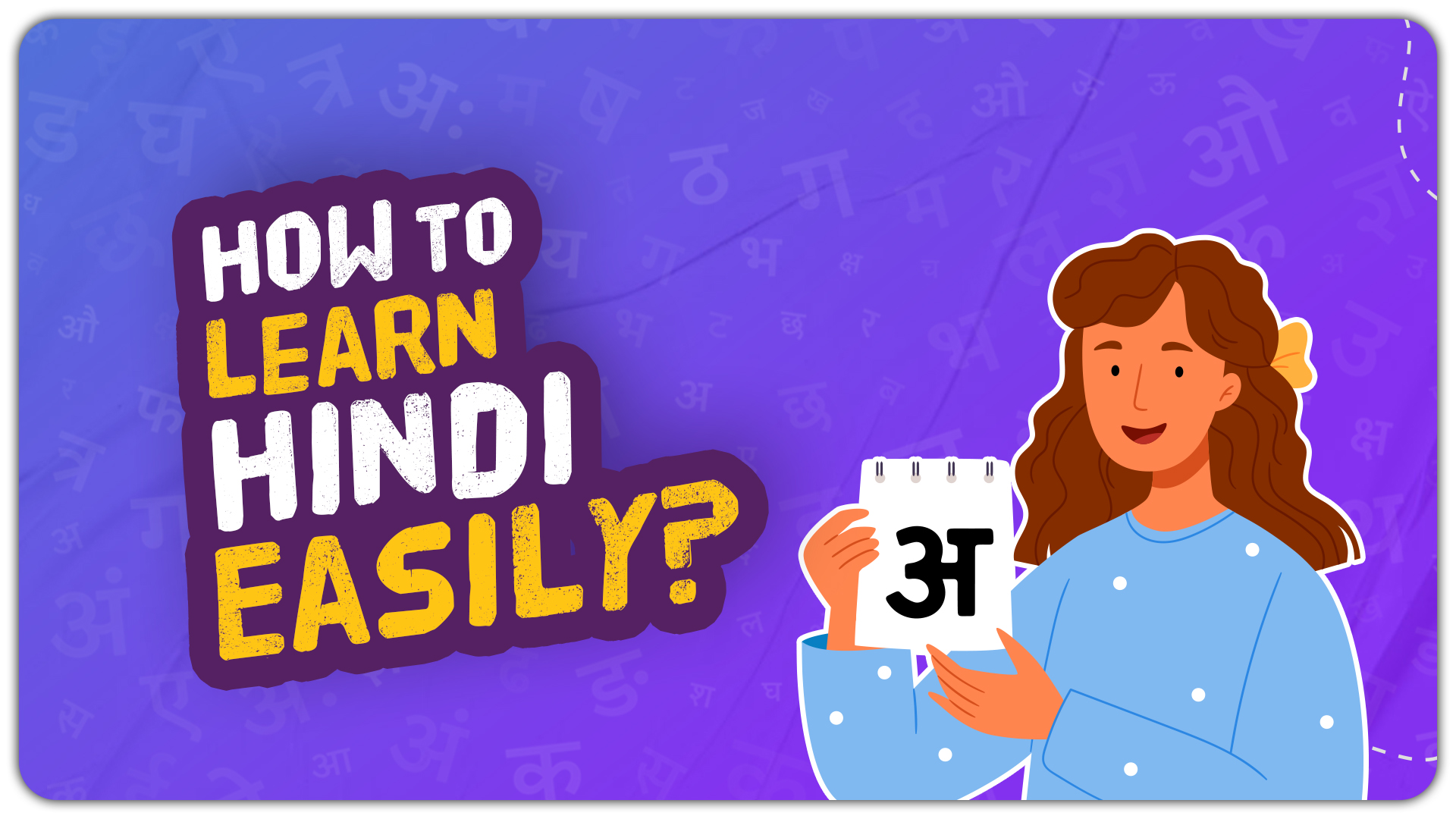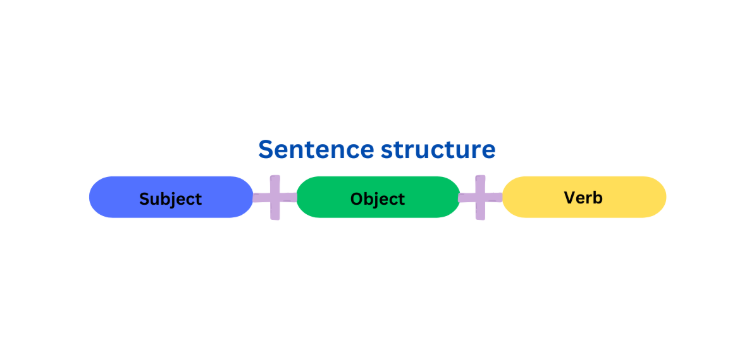How to Learn Hindi Easily? Tips for Beginners to Speak Confidently




Learning a new language can feel like a mountain to climb, especially when it's as rich and vast as Hindi.
If you’ve ever wondered how to learn Hindi easily?
Hindi is a beautiful language; with the right tools and practice, you can learn to speak confidently and enjoy the process.
Let’s dive into some practical tips to help you master Hindi, from the basics to building a rich vocabulary.
It’s important to understand the structure and unique features of Hindi. It is an Indo-Aryan language that is widely spoken in India and Nepal. It’s written in the Devanagari script, and its structure differs from English in many ways, which might seem tricky at first, but with consistent practice, it will become easier. Before jumping into sentences and phrases, it’s essential to understand the foundation of Hindi.
The first step to mastering Hindi is getting familiar with the Devanagari script, which includes 13 vowels and 33 consonants. The script might look complicated at first, but once you break it down, you’ll see patterns that make it easier to read and write.
Type | Devanagari character | Pronunciation Example | English Transliteration |
Vowels | अ | "a" as in apple | a |
आ | "aa" as in father | aa | |
ई | "i" as in ink | i | |
ई | "ee" as in see | ee | |
उ | "u" as input | u | |
ऊ | "oo" as in moon | oo | |
ए | "e" as in bed | e | |
ऐ | "ai" as in air | ai | |
ओ | "o" as in go | o | |
औ | "au" as in house | au | |
Consonants | क | "k" as in kite | k |
ग | "g" as in go | g | |
च | "ch" as in chair | ch | |
ज | "j" as in jam | j | |
ट | Retroflex "t" as in table | t | |
ड | Retroflex "d" as in door | d | |
त | Dental "t" as in tea | t | |
न | "n" as in name | n | |
प | "p" as in pen | p | |
म | "m" as in man | m |
Hindi vowels (स्वर) and consonants (व्यंजन) form the foundation of the language. Each letter in Hindi has its own distinct sound, so practicing pronunciation is key to speaking correctly. Take time to learn the sound of each letter.
One of the most challenging aspects of learning Hindi is mastering the pronunciation. Once you get the hang of the sounds, you'll be able to speak confidently.
Pro tip: Don't be afraid to sound it out. Practice makes perfect!
Understanding grammar is essential for forming sentences and communicating effectively. Here's a quick overview of the essential grammar concepts you’ll experience:
Hindi has its set of personal pronouns (I, you, he, she, etc.). Hindi nouns have genders (masculine or feminine) and can be singular or plural.
Verbs change based on the subject, and tenses include present, past, and future. For instance, "to go" (जाना-Jaana) changes to "I go" (मैं जाता हूं-Main jaata hoon for males or मैं जाती हूं-Main jaati hoon for females).
Hindi uses a subject-object-verb (SOV) order. For example, "I love learning Hindi" would be "मैं हिंदी सीखना पसंद करता हूँ" (Main Hindi seekhna pasand karta hoon).
Grammar Tip: Keep it simple. Start with basic sentence structures and work your way up.

Learning a new language is all about communication, and knowing a few key phrases can go a long way. To get started with speaking Hindi confidently, you’ll need some common phrases that will help you in everyday conversations. Here are a few essential phrases to know:
These little phrases will help you navigate conversations and sound more natural.
To speak Hindi fluently, you need to build a solid vocabulary. Start with everyday words, and gradually expand to more specific topics. By integrating that into your daily practice, you'll begin speaking confidently in no time. You can check out this blog for some more insights: Essential words and expressions in Hindi for building vocabulary
Building vocabulary for social interactions is crucial for fluent speaking. Here are some key areas to focus on:
Whether you're heading to India or planning to interact with Hindi-speaking communities, learning travel-related vocabulary can make a huge difference.
You can check out this blog for some more insights: Essential phrases in Hindi for travelers
Understanding numbers and how to tell time is crucial, especially for everyday interactions.
Mastering numbers and dates will not only help you in conversations but also when navigating the Indian culture. From festivals to meetings, knowing how to tell time is essential.
Hindi is not just about words; it’s about culture and context! Understanding idioms and regional variations adds depth to your language skills.
To truly learn Hindi, immerse yourself in its culture. Attend language meetups, explore cultural events, and take part in community projects to practice speaking with real people. The more you practice, the better you’ll get!
One of the best ways to learn Hindi is by immersing yourself in its culture. Listening to Hindi music, watching Bollywood movies, or even listening to Hindi podcasts can improve your comprehension. Here are some resources to explore:
You can check out this blog for some more insights: Learning Hindi through Bollywood and how movies can improve your speaking skills
Resources | Benefits |
Movies | Learn conversational phrases |
| Understand cultural contexts | |
| Improve listening comprehension | |
Songs | Practice pronunciation through repetition |
| Expand vocabulary creatively | |
| Mimic accents and rhythms | |
Podcasts | Build listening skills on-the-go |
| Focus on real-life usage of words | |
| Develop comprehension at varying speeds |
Technology has opened new doors for language learners worldwide. Use interactive apps like Duolingo, Babbel, or Interval Learning's personalized platform to track your progress. Practice speaking with native speakers via language exchange platforms, and make the most of interactive quizzes and flashcards.
Here’s the real trick: speaking! The best way to improve your Hindi speaking skills is through consistent practice. Here’s how you can do it:
Don’t be afraid to make mistakes. Every error is an opportunity to improve.
Practice Activity | Description | Benefits |
| Role playing | Act out common scenarios like ordering food or introducing yourself | Enhances confidence, builds fluency |
| Recording yourself | Record your speech and analyze it for errors or areas of improvement | Improve pronunciation, self-awareness |
| Shadowing techniques | Repeat sentences after listening to native speakers | Refines accent, improves intonation |
| Language exchange | Speak with native speakers through apps or groups | Boosts conversational skills, builds cultural understanding |
| Using flashcards | Practice vocabulary by creating sentence examples with flashcards | Expands vocabulary, strengthens memory |
| Watching movies/shows | Observe dialogues and try to mimic native speech patterns | Improves listening comprehension, builds contextual understanding |
| Listening to podcasts/songs | Focus on words, phrases, and sentence structure while listening | Enhances listening skills, teaches natural expressions |
| Practicing with AI tools | Use language apps to get instant feedback and suggestions | Provide structures practice, tracks progress |
Reading and writing in Devanagari script is vital for mastering Hindi. For reading, start with children’s books or simple stories. Gradually, progress to newspapers and articles to expand your vocabulary and comprehension. For writing, start with simple sentences and build your way up to complex ones. Journaling in Hindi is a great way to keep track of your progress.
Skill area | Current level | Target level | Tasks to complete | Completion date | notes/comments |
| Vocabulary | Beginner | Intermediate | Learn 50 new words weekly | [Date] | Focus on daily practice |
| Pronunciation | Basic | Advanced | Practice 30 min with audio apps | [Date] | Record progress weekly |
| Grammar | Intermediate | Proficient | Complete 5 exercises weekly | [Date] | Review tenses specifically |
| Speaking | Beginner | Intermediate | Role-play 3 scenarios weekly | [Date] | Practice with a partner |
| Listening | Basic | Advanced | Watch 3 podcasts weekly | [Date] | Use subtitles if needed |
| Writing | Intermediate | Advanced | Write 2 paragraphs daily | [Date] | Focus on sentence structure |
At Interval Learning, we realize that each learner is unique. That is why we provide personalized one-on-one tuition through our Spoken Hindi course by Speak Pro, which is meant to help you speak confidently and eloquently. With our skilled teachers, you'll receive courses personalized to your ability level, allowing you to grow at your speed.
Take the first step toward speaking Hindi confidently by exploring our online courses for beginners and beyond.
Learning Hindi doesn’t have to be hard. Ready to speak Hindi with confidence? Join Interval Learning's Speak Hindi course today.
Keep Going, and Keep Learning!
Let us help you speak Hindi like a pro! ✨
कोशिश करने वालों की हार नहीं होती (Efforts never go in vain)